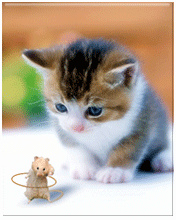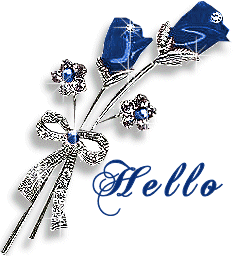
There is no definite history of when starting songket developed in Minangkabau or in Sikek Cleaver. However tetuntulah weaving skills have been taken by our ancestors nation called Austronesian or Malayo-Polynesian, too, from the Land of origin, when there was a massive migration of population from mainland Asia to the south and tumur several thousand years ago, along with all the cleverness essential for life, such as planting becocok intelligence, versatility makes and use of agricultural tools and woodworking and weapons, and so on. In accordance with human nature, basic carpentry skills enrichment of aesthetic experience that became what is now known as the crafts, and later became art. This is in line with developments in the field of artistic expression such as motion, sound art and performance art. Such as inheritance, weaving virtually the same age as stelsel matrilineal Minang people, rice fields in LUHAK terukaan nan Tigo, and oral culture Kato Pusako proverb proverb.
Here too we find common ground on the Austronesian family of fabrics of Sumatra in general with the entire archipelago fabrics to Sumba and Timor, as well as La Na-weaving in northern Thailand and Laos. These families will break up later viewed in terms of motive kahalusan after the entry of Indian and Chinese culture from the north. However, the similarity in terms of equipment beretahan weaving and weaving techniques.
Several hundred years ago, in the upper Batang Hari river, called River Dareh, developing a residential and a prosperous trading center. Residents of the area now called River Nature surambi allocation, and from areas further to the north again, to come to this place to sell the natural results of spices and gold. This area also visited by traders who came from across the sea, from India and China. The women in this area wear prettier clothes for the size of the period, the term now: more fashionable.
This area became known as the kingdom Darmasyraya. This would cikla-cultures. Over the years this area became a meeting point between the economic and cultural-cultural culture that is more rich and developed in the north, China, Mongol and India, with the local culture. In the past few decades, or perhaps up to two hundred years, After experiencing the turn of the kings and rulers, people absorb a lot of science and technology from foreign nations, in addition to economic progress and political enrich and enhance our local culture. Among the progress that is experienced in the field of clothing and weaving techniques, patterns and motifs and enrichment materials that can be used.
If earlier, according to the development of society, people make clothes from yarn made from materials available in their residential places, such as bark fiber, with the development of people trafficking in India to introduce material from cotton and linen fibers, yarns also overlaid with a thin gold plate. Chinese traders brought silk from silkworm cocoons, also yarn wrapped with gold paper and gold known as prada thus be expected that the Indian traders trade too much tersbut materials.
In the year 1347 moved Adityawarman and cultural center of the kingdom of the Malays Darmasyraya to Pagaruruyung, and the area around Mount Merapi and Mount Singgalang which at that time consisted of LUHAK nan Tigo and the Seven Rantaunya Jurai, became known as the Nature Minangkabau, with several central government spread in Pariangan, Tarok River, Limo People, Pagaruryung, Batipuh, Sumanik, Saruaso, Buo, Biaro, Payakumbuh, and others.
Alam Minangkabau with natural philosophy embraced masyrakatnya, flow and proper and natural takambang become teachers, is a chance for growth and culture and the arts berkembangya with enrichment of elements of foreign culture. Composition of community exogamy tribes, and, still more excellent way, sumando manyumando rules, has to eliminate inter-group conflicts so that peace can be realized in the long term and provide opportunities for village children To learn and refine the science and skills including weaving skills .
Batipuh region, as one of the central government, the position as Mr. Tiger Batipuh Gadang Koto Piliang Campo, can be expected to be one very important area in the heyday of old Minangkabau, along with other areas of the above. In line with the situation, people would mandapat more opportunities also to conduct economic and cultural activities including weaving skills so that the quality and style of the higher woven and smooth. Weaving girls and tingkuluk sarong with gold thread to use when they married, and another woman weaving cloth for sale.
Minangkabau traditions in weaving activity is to encourage further because at every ceremonial occasion, woven fabrics are always obliged to be used and presented. The words in the dinukilkan customary names that motive's lips, and uttered all the time. Woven into the clothes of kings, progenitor and progenitor-puti-puti. This period, the glory days of the Ottoman Empire and Central Asia, on top of the greatness of the Mongols in India when the Emperor Akbar, 1556-1605 is promoting the arts and sciences, in the heyday of the Ming and Manchu Dynasty in China: when it perdangangan and cultural exchanges are very rapid and involves the Minangkabau as an area that became the path of trade and the country also has an important commodity of trade of spices and gold, the art of silk weaving and thread view gold in Sumatra, along with Suji and embroidery were the top progress and find features own signature.
Almost all parts of Minangkabau, from LUHAK to Overseas, having centers of weaving handicrafts, Suji and embroidery. Are still developing their style and their own characteristics, which are dominated by the antique dealers and collectors. Some villages are very popular with tenununya cloth and very productive at that time was Koto Gadang Sungayang, and Pitalah in Batipuh, and villagers who continue the tradition of weaving legacy today is the village that includes Batipuh is also Sapuluh Koto Sikek Cleaver.
Motifs woven Clever Sikek always taken from the example of old fabrics are well preserved and is often used as the clothes in traditional ceremonies and for other functions within the scope of traditional ceremonies, such as "tando," and also displayed or held batagak home at the time.
It's hard to say who can be called as a master weaver these days, but the weaving of the famous expert on generations before us have the names of Sari relapse, however, in Salama Baruah; Nuriah, Ipah, pasah, Nyiah and Jalisah Cape.
There are dozens of people on Cleaver master Sikek weaving in those days. Will remain about a hundred years ago persuaded some clever women are very active in the field Sikek and craft business is so menenuni their nickname derived from weaving equipment known until now. Among them, known the names of Macau in Tanjuang Inyiak, Inyiak Suri in-Nur, Inyiak Banang, and Inyiak Karok.
Sikek clever, as the "center of excellece" songket in that time, of the women had done well by weaving a typical request from other areas such as the Pitalah in Batipuah, Koto Gadang in Agam and Sungayang with shades of yarn and specific motif with the area, and known until now as Sungayang motives, motives Koto Gadang and others.







Tidak ada komentar:
Posting Komentar